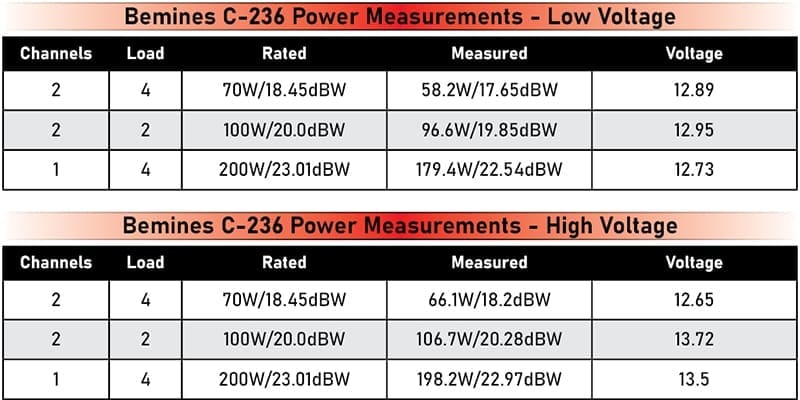Car audio Amp power ratings are often the least important aspect in differentiating amplifier options. Sure, it matters whether you buy a 500- or 1,500-watt amplifier. Neither number tells you anything about either amplifier’s quality, performance or reliability. Surprisingly, many companies are still slapping inaccurate and often impossible power ratings on their products. We hunted down an egregious example to put it through its paces.
Car Audio Amp Power Ratings
The ANSI/CTA-2006-D standard is the reference for car audio amplifier power ratings. Amplifier power measurements should be made under stringent conditions for the information to be comparable to other products.
First, the output signal must contain no more than 1% total harmonic distortion and noise. This specification means the amplifier can’t be pushed well into the region where the signal distorts to display a higher “power rating number.” Unfortunately, you’ll need a computerized audio analyzer to identify the level where 1% THD+N occurs in the output waveform.
Next, the amplifier can’t be powered with more than 14.4 volts. The test voltage should be 14.4V, +0, -5%. Manufacturers can specify power at other voltages if they are identified clearly. Most car audio amplifiers are loosely or entirely unregulated. As such, the rail voltages in the amplifier are a direct multiple of the supply voltage. More supply voltage translates to more output capability, assuming the current delivery requirements are met.
The amplifier must be able to produce its continuous rated output power for at least 15 seconds. This qualification gets around amplifier designs with large short-term energy storage capabilities.
Finally, for multichannel amplifiers, all channels must be driven to their full output capability during testing. If an amplifier has staggered power ratings, each channel should be driven to the 1% THD+N level. This requirement highlights designs that don’t have adequate power current delivery capabilities from the power supply.
A proper power rating for an amplifier will highlight all of the above criteria. For example, “Continuous power: 125 watts x 4 @ <1%THD+N at 14.4V with all channels driven” would indicate a legitimate rating. Stating “Power output: 150W x 4,” on the other hand, tells us very little about the test conditions.
The Test Subject
After an hour of searching the internet for an amp with obviously overstated power ratings, we stumbled across the Bemines C-236. The listing has a power rating of 3,800 watts MAX with a note stating, “Control the surging bass, and experience the ultimate shock.” Let me tell you right now: I am READY! Additional highlights from the listing include “Class AB Amplifier balances power and tone restores real sound effects” and “2 channels of independent output, so that every note is accurate.”
Some additional digging revealed a rated power (W) of 120, a S/N ratio of 90 dB and a distortion specification of <0.15%. The latter, if true, is horrendous. Oh man, this is going to be fun!
The owner’s manual has some more relevant information. It lists the amp as capable of producing 70 watts of power into 4-ohm loads, 100 watts of power into 2-ohm loads and 200 watts when bridged into a 4-ohm load. Frequency response is 10 Hz to 30 kHz with a plus or minus 2 dB tolerance. Finally, sensitivity is 200 mV to 8V.
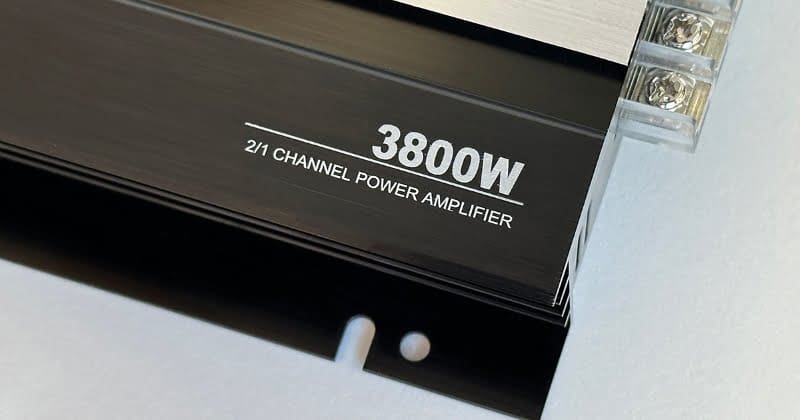
Visual Inspection
Let’s kick this off with a visual inspection, shall we? The amp is based on an aluminum extrusion with a width of 9.2 inches and a height of 1.9 inches. The chassis is 8.8 inches long. A three-position terminal strip on the right end panel accepts power connections. There is a 25-amp ATC fuse next to the power block. A pair of LEDs to indicate Power and Protection are also on this end.
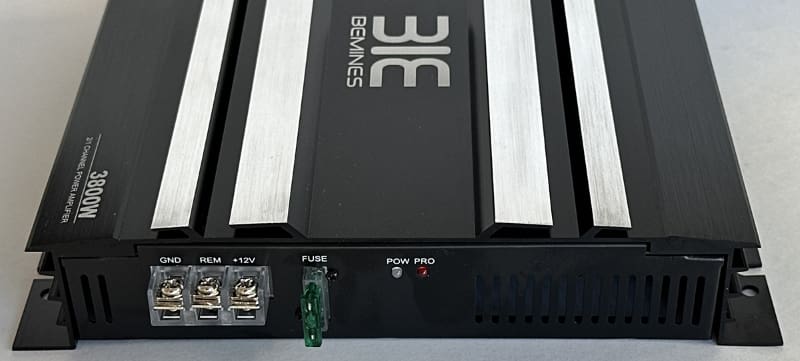
The left side features a pair of RCA input jacks on the far left and a four-position terminal strip on the right for the speaker connections. The knob on the left adjusts the amplifier’s sensitivity, and the one on the right adjusts the low-pass crossover. The crossover can be enabled or bypassed using the switch between the controls.
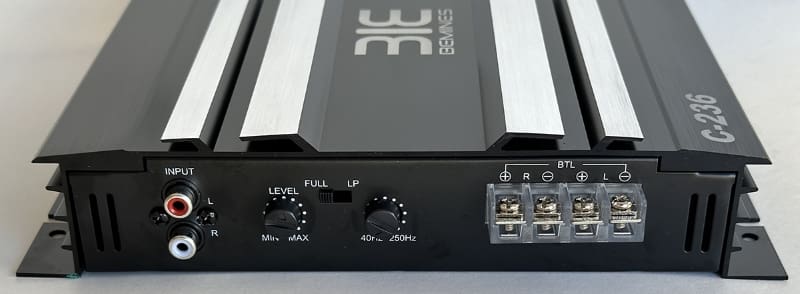
Unlike what’s shown in the listing, the bottom panel of the amp doesn’t have any cooling vents, though the end panels do. There’s no fan to move air through the chassis, though. So, both are useless.
Circuit Board Inspection
The circuit board appears to be single-side as there are a LOT of wire jumpers on it. All the electronic components are old-fashioned, through-hole devices, indicating an ancient design. Alternatively, the manufacturer doesn’t understand the benefit of surface-mount components and the automated machinery that can load those parts onto the circuit board.
The yellow choke on the input is likely a filter for the power supply. It is the smallest gauge wire we’ve ever seen for an application like this. There is a single 2,200 uf, 35-volt cap for filtering on the input and a pair of the same caps on the output side of the supply. The little toroidal transformer has small wiring, but at least it’s secured with black glue. All the resistors on the circuit board are 5% tolerance units, which is pretty low in quality. We are having a bit of a laugh at the old-fashioned potentiometers. They look like parts robbed from a 1970s electric guitar.
Removing the hold-down clamps on the power supply devices reveals a 50N06 TO-220 case N-channel MOSFETs set and a pair of MURF1620CT rectifiers in similar cases. The output devices are 2SB817 and 2SD1047 bipolar transistors in TO-3P-3L cases, one of each for each channel. One aspect we do like is that the thermal sensor is mechanically clamped to the heatsink. With that said, it should be located between the power supply and output devices and not at one end of the amp.
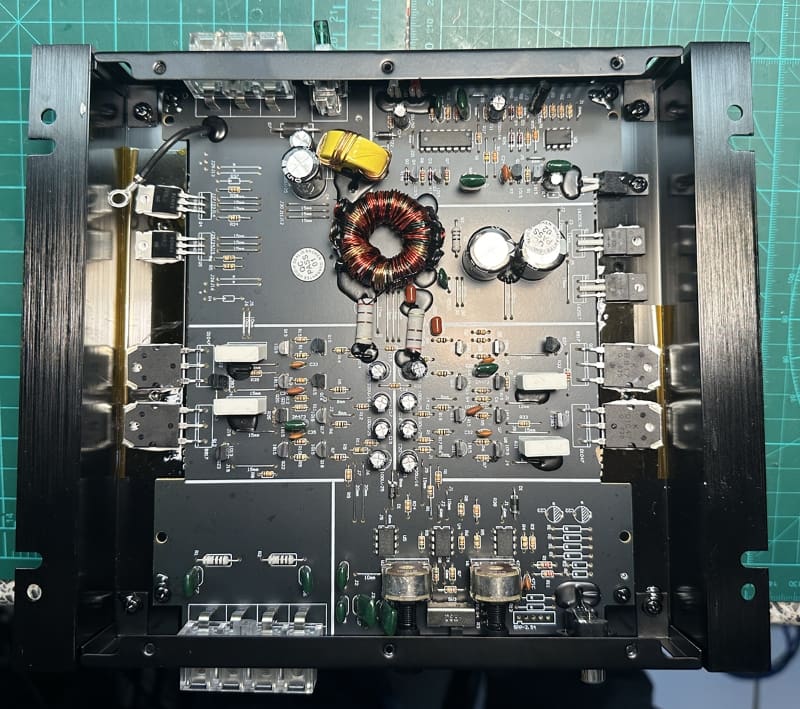
Bench Testing the Bemines C-236
As always, we start our evaluation with low-power tests to minimize the potential for the amplifier to be damaged. So, first, we have frequency response. With the output set to 1 volt, which is 0 dBV, the amp produced the following curves with the crossover turned off.
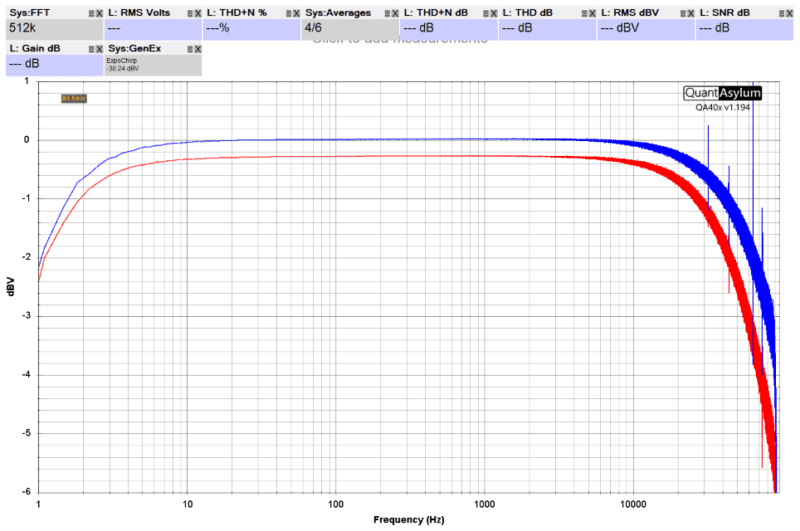
While the spec is 10 Hz to 30 kHz with a -2 dB tolerance, the amp was -2 dB down at 1.2 Hz and over 50 kHz on the top. There was an increasing amount of noise in the output signal above 5 kHz. While the numbers seem better, I’m curious about the amp’s stability.
Next, it was time to measure THD+N at 1kHz at 1-watt into 4- and 2-ohm loads.
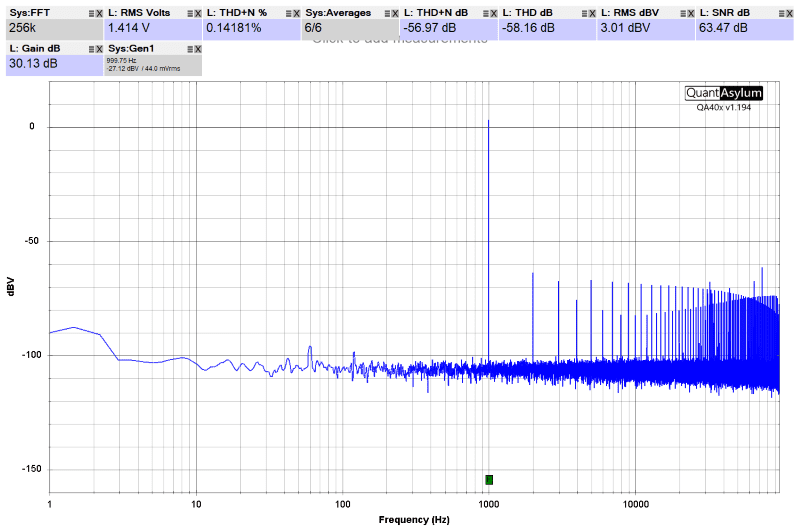
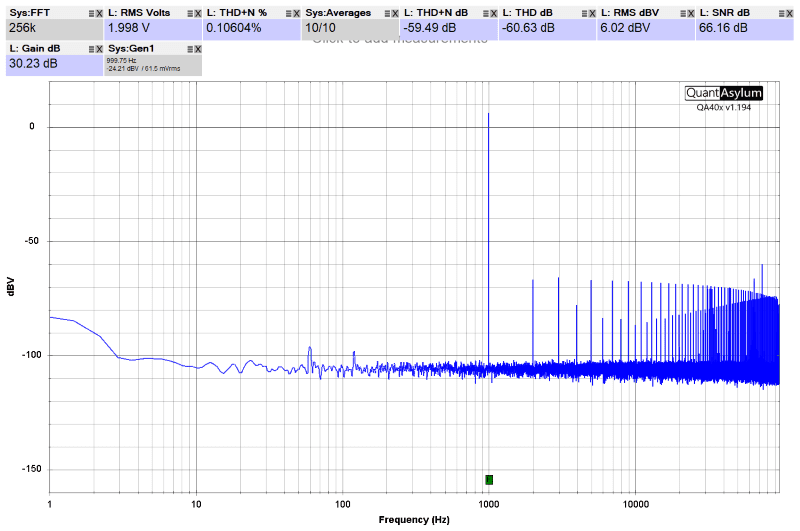
While the spec was 0.15%, the amp bettered that with 0.106 at 4 ohms and 0.142% at 2 ohms. With that said, these are still pretty bad overall. Good amplifiers are typically lower than 0.07-ish, with great amps under 0.01%.
We ran distortion versus frequency measurements at 4- and 2-ohm loads for interest. Those graphs are below.
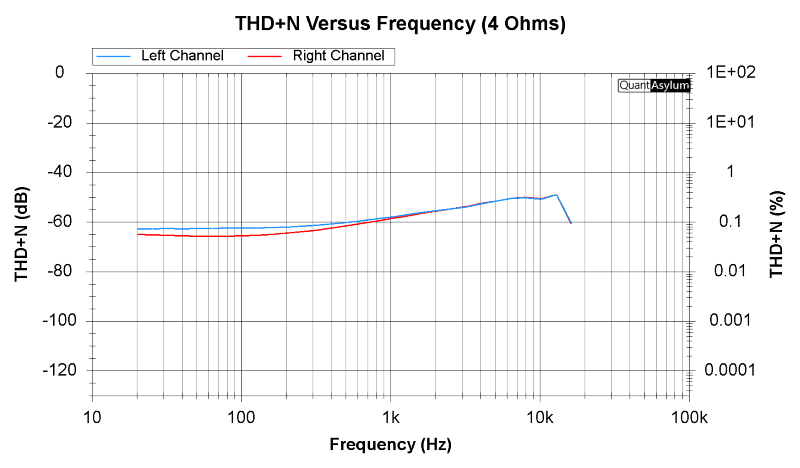
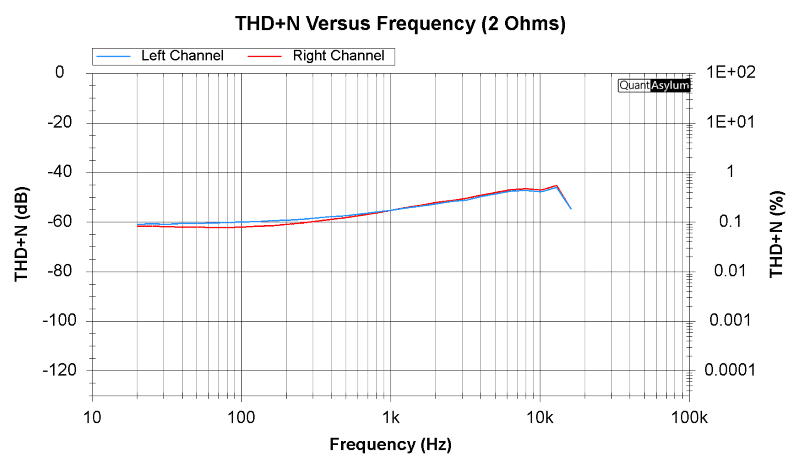
The distortion at 1 watt gets pretty bad at high frequencies. You wouldn’t want to use this as a dedicated tweeter amplifier.
Bemines C-236 Car Audio Amplifier Power Ratings
OK, now it’s time for some power measurements. We increased the amp’s output with it connected to a pair of 4-ohm loads until it hit 1% THD+N. At that level, the amp was producing 58.2 watts of power. We repeated the test with 2-ohm loads, where it produced 96.6 watts. Finally, we measured the output with the amp bridged, and it produced 179.4 watts. In all, these numbers are close enough to the manufacturer’s specifications. With that said, it fell a bit short everywhere.
Purely for the sake of interest, here are the distortion-versus-output levels for the Bemines C-236:
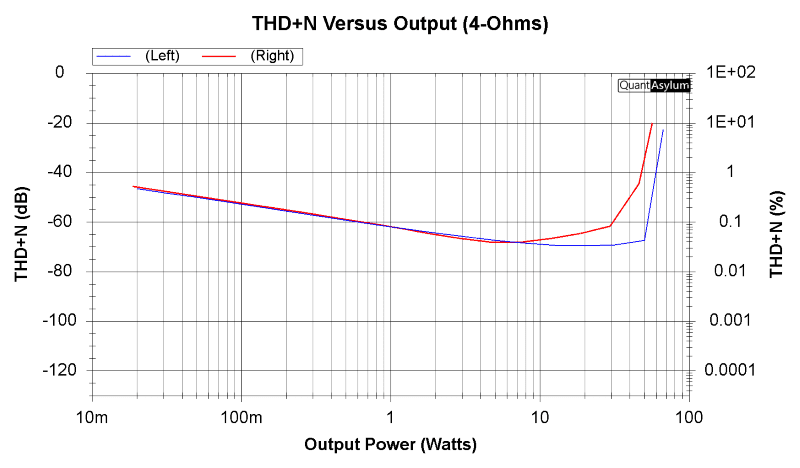
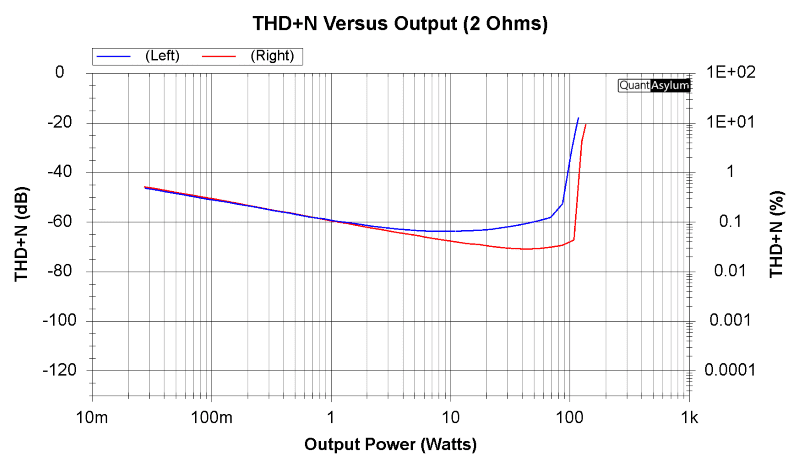
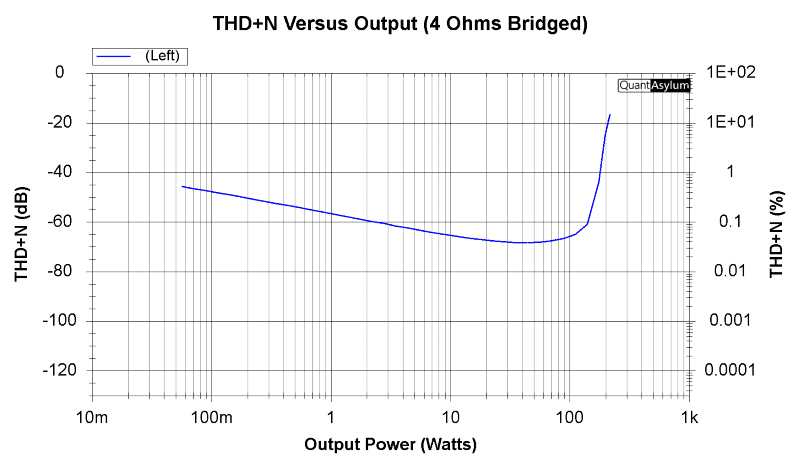
Caught Ya!
Measuring amplifier performance at different output levels can tell you a lot about the design of an amplifier. If we were to look at the distortion numbers of this amp at 1 watt, we’d have missed out on the issue that starts at about 10 watts. One channel has significantly more distortion than the other above 10 watts. We don’t know what was wrong, and given the rest of the performance numbers, we don’t care to research the issue further. We know it’s not right and would be detrimental to performance.
Wait, You Said 3,800 Watts!
Without the giant silk-screening on the front panel, we’d have no major issues with this amp regarding power production. Is there any way to get 3,800 watts out of it? We increased the output while bridged, and the 25-amp fuse on the side popped. As a huge generalization, the most power you will get from a car audio amp is 11 times the fuse rating, or in this case, 275 watts. That multiplier is for a 92% efficient Class D amplifier. Here, we have a Class AB amp, so eight to nine times the fuse rating is a better estimation. That’s around 225 watts.
Let’s also reevaluate the power supply and output devices. The MOSFETs are rated for up to 34.5 amps each, meaning the most power we can get into the amplifier without them being destroyed is 414 watts. The rectifier diodes are rated for 16 amps each, which might allow for up to 32 amps, which is only 384 watts. Finally, the output devices are rated for 12 amps and 100 watts each. So, the output devices are likely at their upper limit with the amp at full power. Three more examples of why a 3,800 watt amp power rating is impossible.
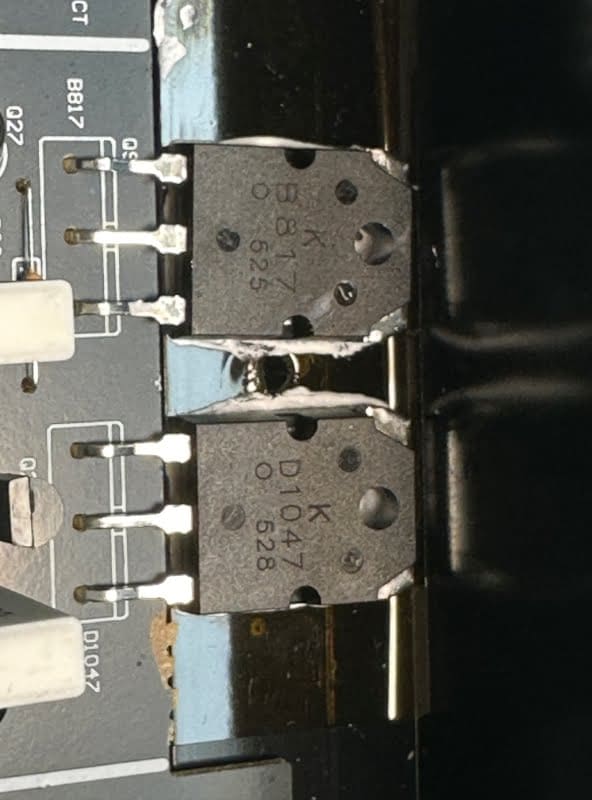
Bogus Amp Power Ratings
Putting such a ridiculous wattage rating on the amp only harms its perceived quality, which is still pretty bad. Knowing that 3,200, or even 400, watts is impossible, how could you trust any other numbers? We know we couldn’t. It’s close enough to its rated power, but the distortion and noise visible in the output make it unsuitable for use in any serious sound system. We’ll add that the amp’s chassis got hot during testing, so we doubt it would play much longer. In all, this is a clear example of an extremely low-quality amplifier.
If you care about the quality of your car audio system in the slightest, you owe it to yourself to visit a local specialty mobile electronics retailer and seek out an amplifier, speakers and source units with good performance numbers. You’ll be much happier with the system; chances are, the equipment will last longer than those brands focusing on internet sales.
Have You Been Paying Attention?
How much attention did you pay to the start of this article, where we discussed the importance of proper amp power rating measurement standards? We clearly identified the load and distortion levels for our power measurements. However, we left out voltage. If you’ve read a few of our Test Drive Reviews, you’d know we always take two sets of measurements. The numbers published above are the low-voltage measurements. So, what happens when we increase the voltage? Here’s the first chart again with the supply voltages added and a second with the higher test voltages. The amp still doesn’t make 3,800 watts, though. Sigh.


